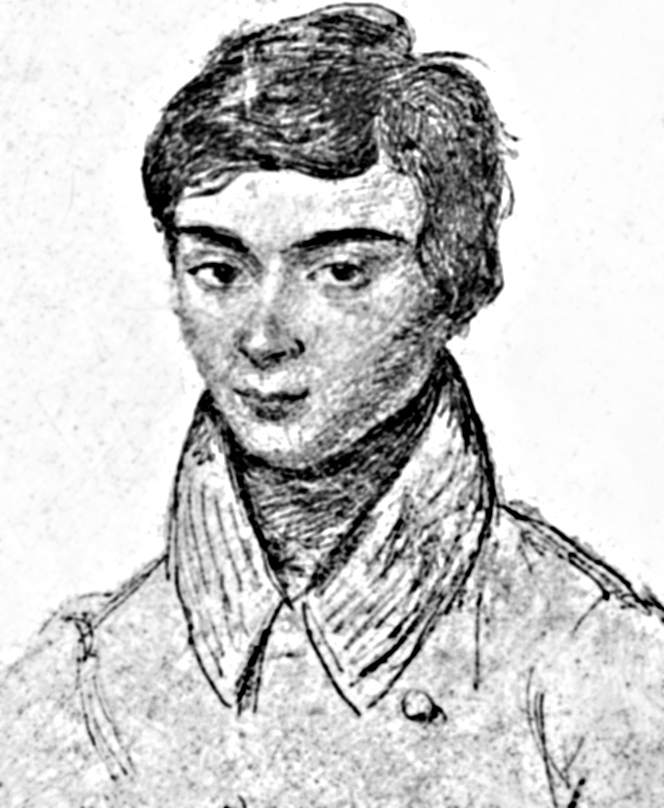
A sketch of Galois, image via Wikipedia
Of all the mathematicians who ever lived, Évariste Galois, born 200 years ago today, is the one who has given me the most inspiration for the subject.
He was a hot-headed genius, living in a period of political instability in post-revolutionary France. The ideas he formulated, during his incredibly brief life, were not only ground-breaking, they were so ahead of his time they could be described as alien to the 18th century world he lived in. Only now are Galois's ideas becoming of dramatic importance. If you are interested in quantum computing, or particle physics, to name just two of today's hottest scientific topics, you should know about Galois.
At the age of 16, with a head full of novel mathematical ideas, he sat the entrance exam for the École Polytechnique, failing to get in. The following year, he tried again. This time, the application ended in frustration and acrimony. The examiner reported the student ‘Knows nothing’ and was of ‘Little intelligence’. More likely, Galois’s approach took too many logical leaps, confusing his supposedly superior examiner. He entered the inferior École Normale, despite being described by the authorities there as ‘Obscure in expressing his ideas’.
Aged 19, Galois sent two papers to the Academy of Sciences as an entry to the Academy’s prestigious Grand Prix. This first attempt at recognition failed for mysterious reasons, although it seems that Cauchy, the eminent mathematician refereeing the works, simply wanted the two papers combined. Galois’s second submission, however, failed in farcical circumstances. The revised paper was sent directly to Fourier, who was secretary to the Academy and appeared sympathetic to Galois’s ideas. But Fourier died shortly afterwards and the paper was lost.
One year later, political tension in France was running high. Galois had friends in revolutionary circles and attended a banquet with them. He was overheard, perhaps by spies, uttering the name of the king, Louis Phillipe, while brandishing a dagger. This being construed as a threat on the king’s life, Galois was arrested. This time, he was released, but he was later re-arrested and this time sentenced to 9 months in prison.
He was not well treated in prison, being forced into drinking matches with his fellow inmates. When Galois complained about his ill-treatment, he was put into solitary confinement.
When out of prison, Galois returned to his mathematics, but his political interests continued to divert his attention. He finally received a response from the Academy of Sciences. His submission was declared “neither sufficiently clear nor sufficiently developed to allow us to judge its rigor”.
The exact circumstances surrounding the final days of Galois’s life and the fateful early morning duel, on 30 May 1832, are unclear. It has been rumoured that he was involved with a young lady, and perhaps the duel was instigated by Galois for her honour. The night before the duel, he set out to document all he could of his life’s mathematical work. He finished his rushed document with “… j'espere, des gens qui trouveront leur profit à déchiffrer tout ce gâchis.” (I hope some people will find it to their advantage to decipher all this mess.)
Galois lost the duel and his short life was brought to a dramatic and violent end, the lack of sleep perhaps contributing to his slower reactions. His final words were “Do not cry, it takes all my courage to die at the age of 20.”
The work of Galois that survives amounts to no more than 60 pages. In its modern form, it bears little relation to the scrawl of his last document, but the ideas remain. He analysed the symmetry in the solutions of equations in ways never previously imagined. These new approaches, combined with his chaotic presentation, were what had confused his superiors at the various academic institutions.
Today, Galois Theory is of fundamental importance in the field of Quantum Theory. It is helping in answering questions about the structure and origin of the universe. It has been applied not only to describing the sub-atomic particles that have already been discovered, but to predicting the existence of new ones. The workings of the Large Hadron Collider, CERN’s giant particle accelerator, are dependent on the strength of Galois Theory.
Who knows how differently mathematics - even human civilisation - may have evolved, had Galois's life not been brought to such a sudden and tragic end.
No comments:
Post a Comment
Note: only a member of this blog may post a comment.